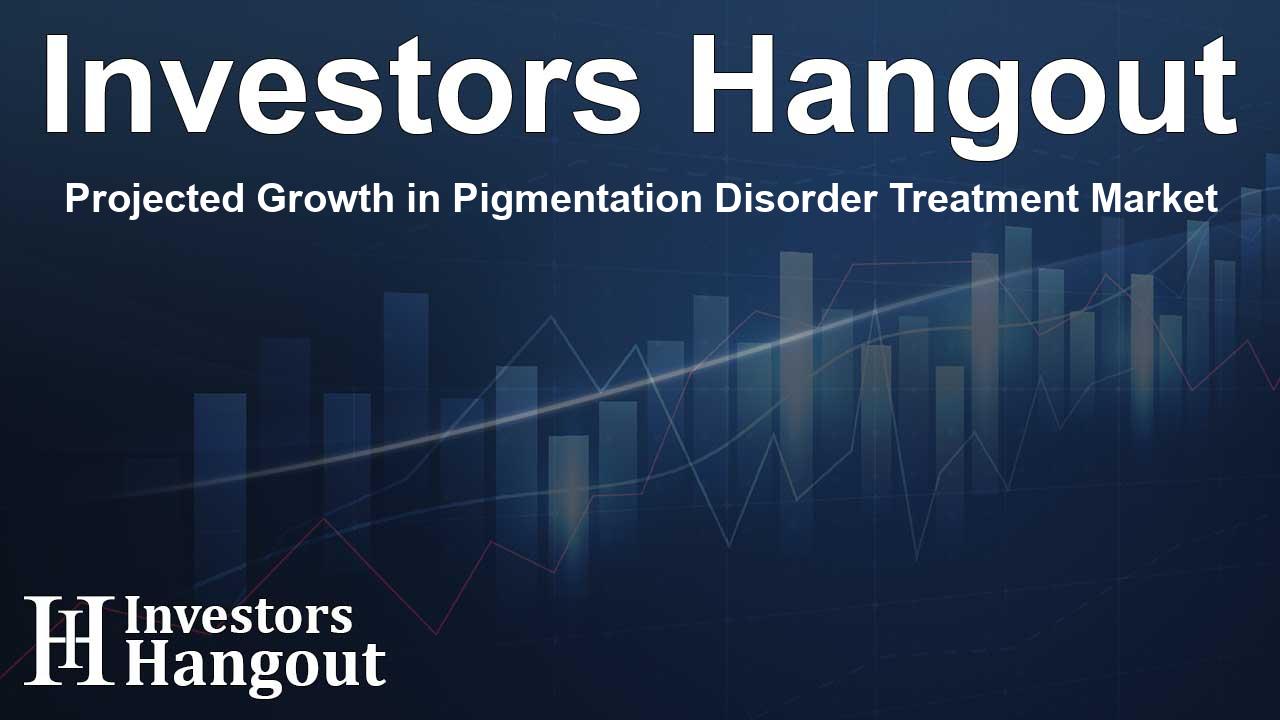Projected Growth in Pigmentation Disorder Treatment Market

Pigmentation Disorder Treatment Market Overview
The global pigmentation disorder treatment market is anticipated to undergo significant growth, with estimates suggesting a surge to USD 10.6 billion by 2031. This market expansion is driven by an impressive compound annual growth rate (CAGR) of 5.2% from 2023 to 2031. This robust growth reflects evolving beauty standards and the rising awareness of skin health across different demographics.
Factors Fuelling Market Demand
A crucial driver behind the upward trajectory of this market is the evolving perceptions surrounding beauty and skin tone. Increasing societal expectations regarding aesthetics push consumers towards treatments tailored to address pigmentation concerns. This heightened demand has motivated product development focused on remedies that align with modern beauty ideals.
Furthermore, the growing field of psychodermatology supports the understanding that skin health can impact mental well-being. Treatments that consider both psychological factors and skin conditions are becoming more prominent, offering innovative therapeutic approaches to those suffering from pigmentation disorders.
Holistic Approaches in Treatment Strategies
The trend toward holistic healthcare significantly influences how treatments are designed and marketed. There is a shift towards integrative dermatology, combining traditional remedies with lifestyle modifications and advanced skincare routines to manage pigmentation issues effectively. Such approaches resonate well with consumers seeking comprehensive care that addresses their overall well-being.
Emerging Technologies and Innovations
Technological advancements have played a pivotal role in the pigmentation disorder treatment market. The introduction of digital health tools, including telemedicine and AI-driven diagnostics, is reshaping how care is delivered. These innovations enable remote consultations and personalized treatment plans, enhancing patient engagement in their skincare journey.
The Role of Environmental Factors
In addition to social influences, environmental factors such as pollution and UV radiation are significant contributors to skin pigmentation disorders. The market is witnessing an increase in the development of skincare products that cater to diverse climatic needs, thus addressing region-specific pigmentation concerns. Such products aim to protect skin health against environmental influences more effectively.
Competitive Landscape of the Market
The pigmentation disorder treatment market is highly competitive, with major players consistently innovating to enhance their product offerings. Leading companies like Galderma and Bayer AG are at the forefront, offering effective therapies, including laser treatments and topical creams for various skin conditions. Their research initiatives and strategic collaborations are critical in shaping market dynamics.
Innovative Products and Key Segments
Among the various treatment modalities, laser therapy has emerged as a leading segment due to its precision and effectiveness in treating pigmentation disorders. Additional offerings include chemical peels, microdermabrasion, and a variety of topical drugs that cater to specific skin conditions such as vitiligo, melasma, and post-inflammatory hyperpigmentation.
Regional Insights on Market Opportunities
Regions like North America are witnessing significant market participation due to high incidences of pigmentation disorders alongside a robust healthcare system. Europe, too, shows growth potential, driven by stringent regulatory standards and rising consumer demand for effective skincare solutions.
Meanwhile, the Asia Pacific region is emerging as a dynamic space for growth, aided by increasing awareness of skincare and contributions from both local and international brands. Companies are tailoring solutions to cater to diverse pigmentation concerns prevalent in the region.
Frequently Asked Questions
What is the expected market size for pigmentation disorder treatment by 2031?
The pigmentation disorder treatment market is projected to reach USD 10.6 billion by the end of 2031.
What factors are driving the growth of this market?
Key factors include evolving beauty standards, advancements in treatment technologies, and an emphasis on psychological well-being associated with skin health.
Which treatment segment is leading the market?
Laser therapy is currently the leading treatment segment in the pigmentation disorder treatment market due to its effectiveness.
How are environmental factors influencing the market?
Environmental factors like pollution and UV exposure are significant contributors to pigmentation disorders, prompting the development of targeted skincare solutions.
What are the major regions contributing to market growth?
North America, Europe, and the Asia Pacific are key regions, exhibiting substantial growth opportunities in the pigmentation disorder treatment market.
About Investors Hangout
Investors Hangout is a leading online stock forum for financial discussion and learning, offering a wide range of free tools and resources. It draws in traders of all levels, who exchange market knowledge, investigate trading tactics, and keep an eye on industry developments in real time. Featuring financial articles, stock message boards, quotes, charts, company profiles, and live news updates. Through cooperative learning and a wealth of informational resources, it helps users from novices creating their first portfolios to experts honing their techniques. Join Investors Hangout today: https://investorshangout.com/
Disclaimer: The content of this article is solely for general informational purposes only; it does not represent legal, financial, or investment advice. Investors Hangout does not offer financial advice; the author is not a licensed financial advisor. Consult a qualified advisor before making any financial or investment decisions based on this article. The author's interpretation of publicly available data shapes the opinions presented here; as a result, they should not be taken as advice to purchase, sell, or hold any securities mentioned or any other investments. The author does not guarantee the accuracy, completeness, or timeliness of any material, providing it "as is." Information and market conditions may change; past performance is not indicative of future outcomes. If any of the material offered here is inaccurate, please contact us for corrections.